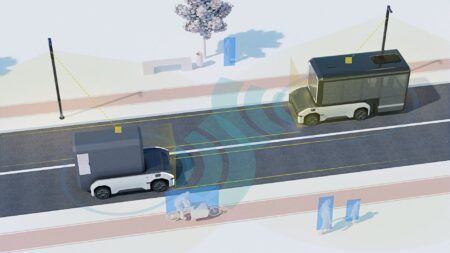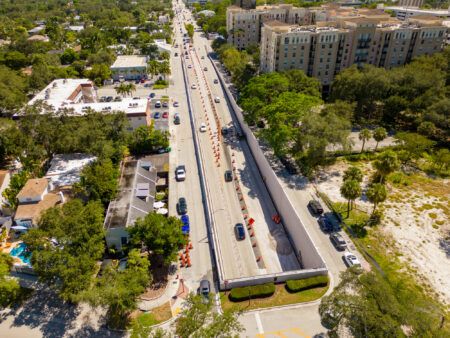The San Diego Association of Governments (SANDAG) has started installing new dynamic message signs (DMS) along Interstate 15 (I-15) express lanes that will more clearly display who can use the tolled lanes, estimated travel times to upcoming freeway connectors, and real-time FasTrak variable toll rates.
A recent SANDAG-commissioned research study determined that the existing signage on the I-15 express lanes can be difficult to read, and that posted information about toll rates and who can use the lanes was not easily understood. With input from I-15 commuters that participated in focus groups and surveys, upgraded signs were designed to address these issues.
Signs will be installed in the northbound lanes first, beginning at the south end of the express lanes and moving north. Signs will be installed in the southbound lanes next, beginning at the north end of the express lanes and moving south. Signs near transit centers and leading to direct access ramps will be installed last, with the entire project anticipated to take approximately 12 weeks to complete.
The I-15 express lanes provide congestion relief and help ease demand on the general purpose lanes, by offering the option of faster travel in variably-tolled sections of the highway. Transit vehicles, motorcycles, zero-emission vehicles (ZEVs), and high occupancy vehicles (HOVs), such as carpools and vanpools, can use the lanes without charge.
The I-15 express lanes provide 20 miles (32km) of flexible travel between State Route 78 in Escondido and State Route 163 in San Diego. There are more than 16 access points where drivers have the flexibility to get in or out of the express lanes from the general-purpose lanes. There are also five direct access ramps (DARs) that make it easy for transit vehicles, carpoolers, and other users to enter or exit the express lanes from local streets without merging across multiple freeway lanes.
To minimize impacts to traffic, the new DMS will be installed at night, between 9pm and 5am, with deployment expected to be completed by June. Traffic impacts will be minimized as much as possible, with regular FasTrak toll rates applying during sign installation work windows. SANDAG says the formula used to calculate the variable toll rates within the express lanes will remain the same during the DMS deployment period.




